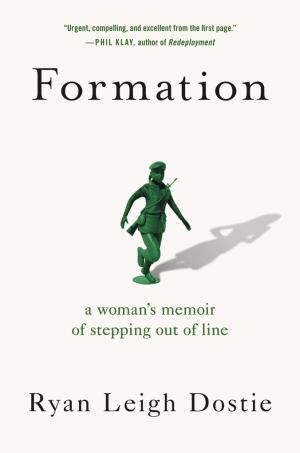January 2020 Book Reviews
January 2020 Book Reviews
How Army Doctrine Got Us Here From There
Military Realism: The Logic and Limits of Force and Innovation in the US Army. Peter Campbell. University of Missouri Press. 390 pages. $50
By Lt. Col. Jessica Grassetti
In Military Realism: The Logic and Limits of Force and Innovation in the US Army, Peter Campbell introduces a theory that tells the story of the Army’s evolution through its doctrine from 1960 to 2008. His multidisciplinary academic background allows for a thorough and thought-provoking analysis of key historical time periods and key leaders that helped mold today’s Army.
Although Army doctrine aficionados will most appreciate the rigor and care with which Campbell analyzes the doctrinal evolution of the Army, this book will have widespread appeal to those who wish to understand why and how the Army got to where it is today. It provides rich historical context of key events and senior leaders’ decision-making processes. The book is relevant for military and policy practitioners who are trying to determine strategy for the future Army as it experiences another transitional period.
Campbell develops and introduces a theory he calls military realism to answer the question that gave him the idea for the book. He seeks to explain how the Army went from a “never again” counterinsurgency mentality post-Vietnam to fully embracing it during the height of the Afghanistan and Iraq conflicts. Although not alone in asking this question, he adeptly lays out a finely argued and meticulously researched path to the answer throughout his book.
Campbell provides realistic analysis, answering how the Army developed its doctrinal theory of victory over time. The application of civilian realism and bureaucratic practices in tandem with military realism explains the influence of civilian leaders and their regulatory control of the Army.
After a brief introduction that attunes the reader to his approach, Campbell begins with an explanatory chapter establishing his theory of military realism. The use of realism in this case should not be confused with the traditional international relations theory of realism. Rather, it more closely aligns with the common definition of realism, which is a pragmatic approach. It argues that “explaining why doctrine changes or persists requires an understanding of how military officers view force, war, and threats.”
He further posits that military realism produces a two-part mindset in military officers. Briefly summarizing, the first is an appreciation that using force to impose one’s will is escalatory in nature. The second is the appreciation that the environment will impact, and potentially hinder, the use of force.
Understanding this mindset is important in the five subsequent case studies because it highlights how senior leaders focused on lessons learned from previous conflicts to make the Army more lethally effective. Additionally, his case studies provide the reader with an abundance of multidisciplinary primary sources that bolster his assertions throughout his book that military leaders’ pragmatism prevailed over dogmatism or service parochialism.
Furthermore, each case study takes place during a period of transition for both the Army and the nation. It is helpful to review these periods and contrast them with current events to better understand how the Army of today should evolve into the Army of tomorrow.
The July publication of Army Doctrine Publication 3-0: Operations represents the latest iteration of how the Army is going to fight and win our nation’s wars. Military Realism is a must-read for anyone who desires a better understanding of the key time periods and senior leader decisions that shaped today’s Army.
Lt. Col. Jessica Grassetti is an Army strategist serving in the Directorate of Strategy, Plans and Policy, Joint Staff. Previously, she was an assistant professor of economics at the U.S. Military Academy at West Point, New York.
* * *
Regiment Captured the Spirit of Its Time
The Crowded Hour: Theodore Roosevelt, the Rough Riders, and the Dawn of the American Century. Clay Risen. Scribner. 368 pages. $30
By Capt. Jonathan Bratten
Few moments capture the eye of American history students as the charge of the Rough Riders up Cuba’s San Juan Hill during the Spanish-American War of 1898. It is full of romance and dash, and it typifies the American spirit of the 19th century. However, as historians will point out, that image is flawed: The Rough Riders charged up Kettle Hill, not San Juan Hill, and not alone—they were accompanied by two other regiments of Regulars. Nor was it dashing; it was bloody, chaotic and confused. It was war.
But it was absolutely marked by the American spirit of the late 19th century. This is what Clay Risen is able to capture in his work The Crowded Hour: Theodore Roosevelt, the Rough Riders, and the Dawn of the American Century. He places the Rough Riders—the 1st U.S. Volunteer Cavalry Regiment—in their true place in history. They were not the saints suggested by the typical hagiographies of the first half of the 20th century, nor should they be relegated to the dustbin of history, where so many seem willing to place them today.
They come across instead as characters of their time. Risen creates a narrative that follows the regiment from its inception as an idea of Theodore Roosevelt, all the way to Cuba, and back again.
Roosevelt’s character is bound up, heart and soul, in the image of the Rough Riders. There is no Rough Rider regiment without Roosevelt and conversely, without that four months of wartime experience, there is no bellicose Roosevelt who later sweeps into the presidency. Risen shows how the organization and the individual influence one another through the experience of the Spanish-American War.
This conflict is not merely the backdrop to the Roosevelt and the Rough Riders story; it is the great moral conundrum that America wrestles with in 1898. As Risen lays out, the U.S. is far from united as the turn of the century approaches.
On one hand, the war is an attempt to integrate disparate groups and forge a new nation that will go forward into the new century full of vigor. On the other hand, the war demonstrates how feeble U.S. power is as the War Department struggles with even the most basic of tasks.
Risen places the war in its proper historical context and does not shy away from tackling the difficult topics of race, imperialism and labor relations.
He uses a good mix of primary and secondary sources, as well as photos, to tell his story. His real power lies in the narrative format, bringing the reader along with the Rough Riders as they begin their path into the American mythos. This book will resonate with longtime historians and first-time readers alike.
Capt. Jonathan Bratten is an engineer officer in the Maine Army National Guard, in which he serves as command historian. He holds bachelor’s and master’s degrees in history.
* * *
America Comes to the Fore in Tour de Force
Fire and Fortitude: The US Army in the Pacific War, 1941–1943. John McManus. Caliber. 640 pages. $34
By Col. Cole Kingseed, U.S. Army retired
Despite deploying 21 infantry and airborne divisions, plus several more regimental combat teams and tank battalions whose manpower equated to three or four more divisions to the Pacific, the Army’s contribution to victory in the Pacific Theater in World War II has been largely forgotten.
“Beneath our comfortable cultural veneer of the greatest generation fighting the good war, the real story of the Pacific/Asia War awaits telling, the dirty war, the merciless war, the Army’s war.” Thus writes John McManus, who strives to correct this imbalance in Fire and Fortitude: The US Army in the Pacific War, 1941–1943.
Fire and Fortitude is hardly McManus’ first venture into writing about World War II. The author of a dozen other books, McManus is Curators’ Distinguished Professor of U.S. military history at Missouri University of Science and Technology. His acclaimed books include September Hope: The American Side of a Bridge Too Far and The Dead and Those About to Die: D-Day: The Big Red One at Omaha Beach.
McManus begins his narrative with Pearl Harbor, then concentrates on the Japanese conquest of the Philippine Islands. His description of the obstacles faced by Gen. Douglas MacArthur in conducting combined operations is excellent, such as the “White Australia policy” in which the Australian government sought to preclude black troops from the theater.
“In the wake of the troubles [between American and Australian troops], Lieutenant General Sir Iven Mackay, the heavily combat-experienced commander of the Australian 2nd Army, made it clear [to his officers] that interallied fighting was unacceptable,” he writes.
Sino-American relations proved exceptionally difficult to Gen. Joseph “Vinegar Joe” Stilwell, commander of the China-Burma-India Theater, due to strong personalities and the inability of Stilwell and Chinese Gen. Chiang Kai-shek to set aside personal differences and focus on common goals. According to McManus, “China appeared to be something of an afterthought, especially to the British, who were far more concerned about checking Hitler and preserving their own empire.”
McManus concludes with the victory at Makin and Tarawa atolls in the Gilbert Islands, an island chain at the eastern extreme of the Empire of Japan. In the interim between Pearl Harbor and the conquest of the Gilberts, the U.S. Army came of age, every bit as much as Rick Atkinson describes the U.S. Army in North Africa in An Army at Dawn: The War in North Africa, 1942–1943.
By the time Maj. Gen. Ralph Smith’s 27th Infantry Division secured Makin in November 1943, the Army was on the “cusp of full maturity, slowly, steadily growing into a mortal adversary for its Japanese counterpart.”
To his credit, McManus does not shy away from controversy. With respect to MacArthur’s defense of the Philippines, he opines that “seldom has an American commander of any status prepared a battle plan so inappropriate to his circumstances.” Moreover, McManus posits that the term the “fall of the Philippines” is a misnomer.
“To be sure, the Japanese established military and some level of political control over key portions of the archipelago [but] the events of that tragic spring of 1942 were really a prologue, not an epilogue,” as Japan would never possess sufficient troops to keep the Philippines in line.
Nor is McManus reluctant to provide his candid assessment of the Army’s leading commanders. MacArthur emerges as a “pompous, bombastic, and vainglorious” officer; Maj. Gen. Jonathan “Skinny” Wainwright appears as “a down-to-earth field soldier who loved being with troops and horses, and not always in that order”; Stilwell appears as “a complex man, an energetic mixture of intellect, courage, and withering judgment”; and Lt. Gen. Robert Eichelberger as “probably the finest commander in the theater, consigned to obscurity by MacArthur’s jealous vanity.”
In the final analysis, the Pacific war unleashed powerful nationalistic, ethnic and ideological forces that haunt the U.S. to this day. In addressing these forces, McManus has produced a tour de force. Fire and Fortitude is narrative history at its best. Readers will anxiously await McManus’ second book in this two-volume history of the Pacific war.
Col. Cole Kingseed, U.S. Army retired, a former professor of history at the U.S. Military Academy at West Point, New York, is a writer and consultant. He has a doctorate from Ohio State University.
* * *
Incisive Narrative Delves Into Soldier’s Trauma
Formation: A Woman’s Memoir of Stepping Out of Line. Ryan Leigh Dostie. Grand Central Publishing. 368 pages. $28
By Kayla Williams
Ryan Leigh Dostie’s new memoir, Formation: A Woman’s Memoir of Stepping Out of Line, is wonderfully written, brutally honest and deeply deserving of your attention. The opening line immediately telegraphs that this will not be your standard war story: “A few hours before I am raped,” she writes, “two officers in a bar try to corner me and steal my panties.” It’s a bracing start to a book rich with anecdotes that made me gasp and cringe in pained recognition.
Dostie and I served at the same time and in several of the same locations. Our times at the Defense Language Institute and in Baghdad overlapped, though since we studied different languages and were then assigned to different units, we never met. But men said many of the same things to her that they said to me: “You’re too pretty to be in the Army.” “Do you really want to ruin this guy’s life?” “You’ll make some man a really great wife someday.”
She waited over a decade after leaving the military to publish this book, and it shows. The time Dostie spent emotionally processing her experiences in therapy and honing her writing craft in a Master of Fine Arts program shine through in incisive analysis of her motivations and reactions expressed in beautifully turned prose: “I clip my teeth shut when she’s around,” “reckless pride passes for ambition,” “the thought trails behind me like a steadfast little puppy.”
The accounts of training, going to the field, packing for a deployment and going to war will likely resonate with nearly all combat veterans. Dostie provides tightly rendered vignettes illustrating the inanity of the Army (inventory and pack a CONEX box, get ordered by one NCO to pull out all the gear to re-inventory it, get yelled at by another for unpacking it); the way that “fear stretched too long simply becomes boredom” downrange; and aching physical discomfort (“it’s not really a war until someone gets dysentery”).
At the same time aspects of her story shine through as universal for soldiers, her evocative descriptions of being a woman in the predominantly male Army eloquently capture the ways in which our experiences are decidedly different from men’s. While military men are also sexually assaulted, in roughly equal numbers, a significantly higher percent of military women are assaulted. Dostie recounts how the investigation of her rape and her command’s response went horribly awry, in part due to deeply entrenched sexism.
She then delves into her own mental, physical and emotional responses to that triple trauma in excruciating, exquisite detail. Her exploration of shame, being at war with her own body, deeply felt rage, delusions, suicidality, compartmentalization and a hard-fought journey to functioning is wrenching, necessary reading.
My only—very minor—quibbles with Formation are the difficult-to-track flow of time after Dostie returned from Iraq, and the affectation of blacking out language related to her intelligence work. These are not significant enough to detract me from wholeheartedly recommending the book, however. Anyone wanting to understand the experience of military sexual assault, women’s combat deployments and the aftermath of trauma should read this book. It is an absolutely essential addition to any collection of military memoirs.
Kayla Williams is a senior fellow and director of the Military, Veterans, and Society Program at the Center for a New American Security, Washington, D.C. She is the author of Love My Rifle More Than You: Young and Female in the U.S. Army.
* * *
Blunting Germany’s Attack in the Ardennes
Smashing Hitler’s Panzers: The Defeat of the Hitler Youth Panzer Division in the Battle of the Bulge. Steven Zaloga. Stackpole Books. 372 pages. $29.95
By Matthew Seelinger
In the introduction to his latest book, Smashing Hitler’s Panzers: The Defeat of the Hitler Youth Panzer Division in the Battle of the Bulge, Steven Zaloga asks, “Why did Hitler’s 1944 Ardennes offensive fail?” He proceeds to answer this by focusing on the northern sector of the German offensive, the operations of the 12th SS Panzer Division Hitlerjugend (Hitler Youth), and the American units resisting the German advance.
Zaloga, the author of numerous books about World War II, opens Smashing Hitler’s Panzers by discussing the strategic setting in the European Theater before Operation Wacht am Rhein (Watch on the Rhine), the original German code name for the Ardennes campaign, also known as the Battle of the Bulge. He also examines planning for the German offensive, from Adolf Hitler’s “big solution” that called for the capture of Antwerp, Belgium, to less ambitious alternatives (“small solutions”) proposed by his generals and ultimately rejected by Hitler.
Readers may find Zaloga’s use of the term “Operation Autumn Mist” (Herbstnebel) instead of the more familiar “Watch on the Rhine” interesting. The latter was the original name for the Ardennes operation; the German High Command renamed it Autumn Mist in early December 1944, but old habits remain hard to break.
After his discussion of the strategic setting, Zaloga details the primary German unit covered in his book, the 12th SS Panzer Division, a Waffen-SS formation nicknamed the “Hitler Youth Division” because it was organized in 1943 with volunteers from the Nazi Party youth group.
The 12th had been introduced to combat in Normandy, France, in the summer of 1944 and had to be reconstructed in the fall after suffering heavy losses, particularly among its tank crews. As Zaloga points out, the 12th SS Panzer Division units, while at full strength at the opening of Autumn Mist on Dec. 16, were composed of recently trained recruits of poor quality.
This—coupled with issues with distribution of fuel and ammunition, and a sudden thaw that turned the already inadequate road network into a quagmire—all but doomed the offensive before it started. The operation was dealt additional setbacks when the infantry units failed to achieve the initial penetration of U.S. lines.
On the other side, Zaloga describes the U.S. forces opposing the 12th SS Panzer Division, the first of which was the 99th “Checkerboard” Infantry Division, an inexperienced outfit that accorded itself well after recovering from the initial shock of the offensive. The 12th then faced off against the veteran 2nd “Indianhead” and 1st “Big Red One” Infantry Divisions.
A highlight of the book is Zaloga’s detailed descriptions of each division’s engagements against the German panzers in and around the Belgian towns of Krinkelt-Rocherath and Butgenbach. In each case, the American defenders inflicted heavy, irreplaceable losses on the Germans.
As a result, the Germans abandoned the Sixth SS Panzer Army’s drive toward Antwerp in about a week, and shifted the operation’s focal point to the south in the Fifth Panzer Army’s sector, as the Fifth had achieved more success and surrounded the key crossroads town of Bastogne.
Zaloga’s prose is readable and includes a number of excellent maps (some a bit small) and dozens of photographs that help provide context. The book could have used more careful editing, as a number of units are misidentified and there are a handful of typos.
That said, Smashing Hitler’s Panzers is a fine contribution to the literature on the Battle of the Bulge.
Matthew Seelinger is chief historian of the Army Historical Foundation, located at the National Museum of the United States Army, Fort Belvoir, Virginia, and editor of the foundation’s quarterly magazine, On Point.






